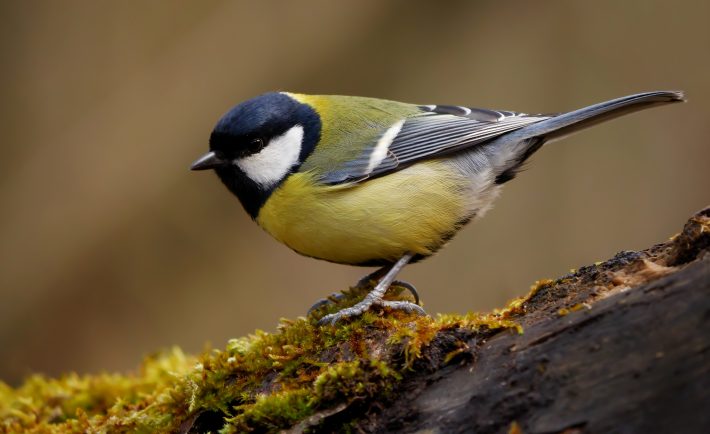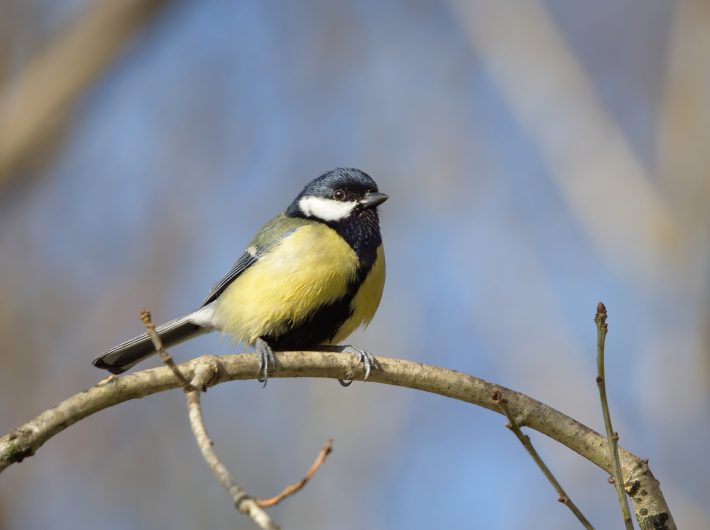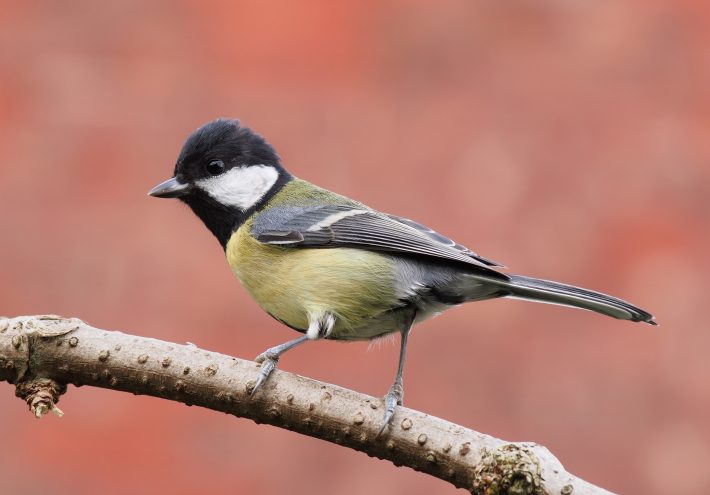Great tits in cities have paler plumage than their forest-living relatives
Results of a collaborative European study reveal the difference in colour vibrancy between urban and countryside great tits, and what that means for their health.

Known for their striking yellow feathers and distinctive song, great tits are a common sight in gardens and countryside alike. However, new research, published in the Journal of Animal Ecology reveals that urban great tits tend to have paler plumage than their countryside counterparts.
A collaborative study, led by researchers at Lund University and the University of Glasgow, analysed feather samples from great tits in European cities and forests. The results show urban great tits are often significantly paler than those in the countryside, with dietary differences thought to be the main cause.
Why are the colour of bird feathers important?
The colour of a bird’s feathers plays a number of important roles in a bird’s health. This includes influencing mating selection, deterring predators and camouflage. As a result, colour strongly impacts bird survival chances and likelihood of reproductive success.
Pigments called carotenoids, which are found in a bird’s food sources, create the great tit’s distinctive yellow colouring. The new study suggests that urban great tits are unable to consume as many carotenoids from their food compared to countryside counterparts – possibly fewer than they might need to actually stay healthy.
Carotenoids are also important antioxidants that help the body combat the toxic effects of pollution. The paler plumage of urban great tits suggests that they have weaker defences against the adverse health impacts of pollution.

Pablo Salmon, a researcher at the Institute of Avian Research in Germany, who undertook the work at the University of Glasgow, said: “The paler yellow colour of urban great tits indicates that the urban environment affects the food chain. Although, we do find that the severity of that effect is not the same across all European cities.”
For example, the researchers found that in Lisbon, forest great tits displayed much brighter feathers than city great tits. In Malmö, on the other hand, the difference in plumage between city and forest great tits was considerably less noticeable.
With the expanding of urban areas, animals increasingly find themselves living in towns and cities. Some may benefit from milder temperatures and fewer natural predators. But, they also have to cope with pollutants and changes in their diet.
Previous research shows that animals in cities are duller in yellow, orange and red tones compared to those in the countryside. However, these studies only focused on single locations. Hannah Watson, a Lund University researcher, said: “We used feather samples collected from great tits in cities and forests all across Europe. Different methods all confirmed that the urban great tits are paler.”
How can urban design help great tits?
The researchers that the study can help us to understand how to create urban environments that are more beneficial for biodiversity. They suggest that planting more native trees and plants in greenspaces can help small birds, like great tits, by giving them a healthy diet of insects and spiders.

Pablo Salmon said: “We need further studies to understand the ultimate consequences of colour differences for urban birds and why some cities appear more favourable environments than others. This will aid the development of biodiversity-friendly policies in urban design. It will also help to improve the quality of life of both people and wildlife.”
Article based off a University of Glasgow press release.
Read more:
, , , , , & (2023). Urbanisation impacts plumage colouration in a songbird across Europe: Evidence from a correlational, experimental and meta-analytical approach. Journal of Animal Ecology, 00, 1–13. https://doi.org/10.1111/1365-2656.13982
Like what we stand for?
Support our mission and help develop the next generation of ecologists by donating to the British Ecological Society.